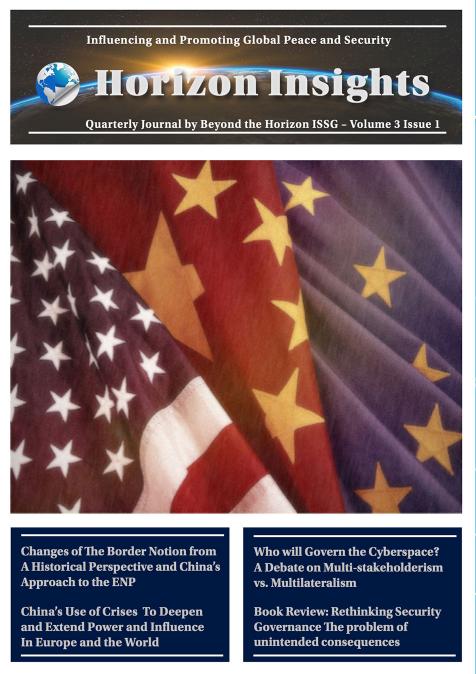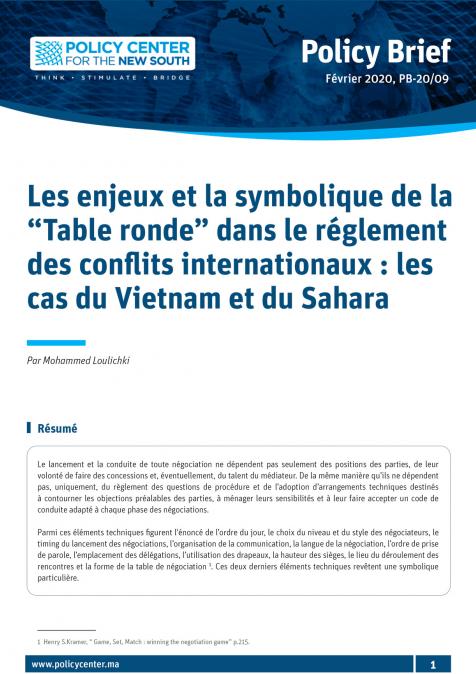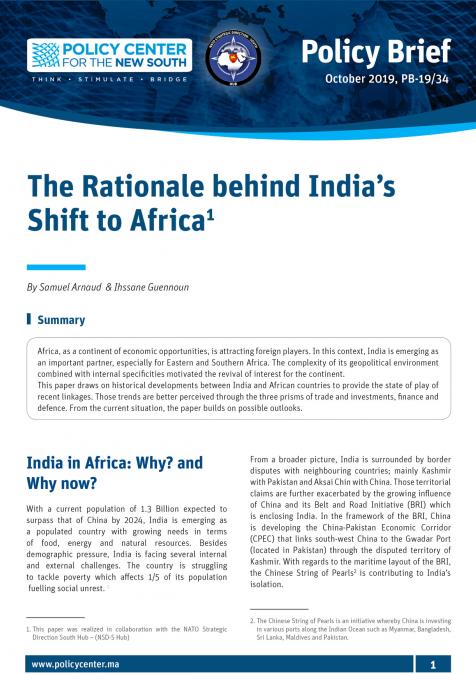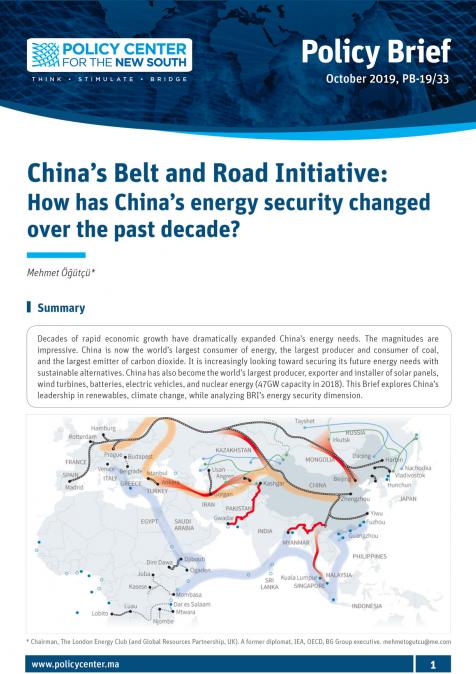Publications /
Opinion
They just seemed like dragonflies, oversized species, menacing and reassuring at the same time. The rotor blades of the helicopters were reflecting the rays of the sun, unusually hot at these early morning hours. Graham Martin, the grey-haired US ambassador, was hurrying by foot to his residence a couple hundred yards away. He needed to get his black poodle, Nitnoy, and his suitcase. Washington had ordered the total evacuation of Saigon; the “Operation Frequent Wind” would try to save all remaining American citizens and some thousand allies, former generals, colonels, and CIA operatives. Leaving the soldiers, the hundreds of thousands of loyal allies, to be executed or forced to repent in Communist reeducation camps. The ambassador, “code two,” would be flown off the helipad, located on top of his six-floor embassy on Gia Long Street. The evacuation of Saigon was nothing less than the escape from surrender. North Vietnamese troops were encircling the capital of South Vietnam, Vietcong guerrillas already had infiltrated the town. The runway of Tan Son Nhat airport was destroyed. During the last hours, which ended 12 years of war, another four marines were KIA (Killed In Action) bringing the total loss of US troops to 56 559.
A Poodle on the Leach, Cash in Trousers
April 29, 1975, turned into both a nightmare and a historical date. Thousands were trying to force their way into the American embassy. The roof symbolized the gates to heaven and salvation. US helicopters would pick up, a dozen or two at a time, CIA torturers, weapon dealers, priests, diplomats, war reporters, Vietnamese generals in civilian clothes and some in uniform; including a barman of the hotel “Caravelle,” where war reporters exchanged horror stories in the Rooftop bar and ordered Pernod Ricard without water. Towards the end of the war, some writers never left the hotel, from the bar stools upstairs, during the late hours, they could see the front line, tracers, and explosions. The better paid “hacks” preferred to bed at the Continental on Dong Khoi street, where Graham Greene was a long-term guest in room 214; he wrote his bestseller The Quiet American in this historic hotel. During the 18-hour evacuation operation, 81 helicopters flew 1373 Americans and 5595 Vietnamese out of the city. At
some of the departure points, panicked Vietnamese tried to hold onto the giant Jolly Green helicopter skids, just long enough to reach the boats of the American fleet anchored off the coast. After minutes hanging between heaven and hell, the devil grabbed them; when Vietnamese evacuees were ordered to leave their bags behind, they opened their luggage and stuffed bundles of cash and dollars under their shirts or into their clothes - foundation for their start in freedom.
The American ambassador hurried back to his embassy, where desperate Vietnamese still tried to scale the 15-feet concrete wall, being pushed back by US troops, who had fixed bayonets onto their rifles. If the Vietnamese did not let go of the wall, the soldiers smashed their fingers with the rifle butts. Bodyguards carried Mr. Martin’s bag, one of the armed security officers pulled his leashed poodle through the crowds. The personal cook of the ambassador followed his master like glue to his shirt, ready to escape to America, even without a shirt to change. A perfect scene for Hollywood, driven into the absurd by a repeated patriotic hit “Ballad of the Green Berets,” on an American military Radio network station; somewhere in the streets nearby, a schmaltz song written and sang by a staff sergeant named Barry Sadler a decade before the great American escape from Saigon. The melancholic voice of the Vietnam veteran was loud enough to drown out the deadly noise of battle advancing, louder, ever more menacing, towards the embassy. A man on a bicycle hurled a grenade into the crowd waiting in front of the gates, which, for some of those planning to escape, would end in purgatory, hell on earth. No hope for an ambulance to arrive, the only thing we had to fear was, incoming rockets, screams of pain, part of life in this world as barking dogs, and unlimited horror -camouflaged by revenge, more torture, and executions. This was the end, the ends of a nation, surrender without surrendering. A few hours to go, fading away, the stars, and stripes folded into a suitcase. The flower markets were closed, the pretty girls preparing bouquets of roses, disappeared, trying to find a place to hide. No more music. Tear gas drowned the perfume lingering in the good old days like clouds over the market. Barry Sadler survived Vietnam, and shot himself accidentally in Guatemala in his head, forever quadriplegic, confined to a hospital bed with brain damage. And then he died. . .
A Crime Against Humanity
Once again, if evidence was still needed after thousands of years of human folly, war is mad. Whatever the value of a medal, the glory is buried by a psychopathic syndrome, a loss of dignity and human spirit. Bombs and bullets are not demonstrating military might, but a loss of reason, logic, and hope. A war can be just the defenses of our values: democracy, freedom of speech, freedom of the press, voting, organizing labor unions, traveling, creating art, and protesting… Vietnam was not such a war; Vietnam was a crime, a crime against humanity. The loss of the American spirit in the self-righteous conviction that, communism should be stopped in Indochina. It was not a dictator, who deployed the first soldiers in the early 1960s to the jungles of Vietnam; no, it was a young President, who, for many of his supporters, symbolized the new spirit of America, its resurrection. John F. Kennedy had no time to prove that he is a genius. Killed at age 55 by a sniper -a former marine-, and not in the swamp in a distant land, but in Dallas, Texas, a heartland of America. He did not witness how his former Vice President, now his replacement, Lyndon B. Johnson, sent hundreds of thousands into battle, often not knowing why they were fighting. Suffocated by fear, confronting a peasant army, often moving into battle through hand dug tunnels and advancing with a bag of rice with their feet covered by sandals made of bamboo. Students in Berlin, London and Paris, marched for the Vietcong, whose spirit, whose battle against the oppressors, they admired. They burned the stars and stripes, the symbol of those who had sacrificed their lives to liberate France from Nazi occupation.
Attempting to Avoid Another War
In 1968, Paris was experiencing a revolt by students, supported by some workers, the streets were filled with kids -often part of the bourgeoisie-, carrying flags showing the portrait of Che Guevara. They were chanting the name of Ho Chi Minh, the political symbol of Vietnam’s war of survival against Washington, marching with red flags, roaring ho, ho, ho, Ho Chi Minh, without really knowing about his hardship in New York, London and Paris -stations of a rebel against colonialism. Meanwhile, the US defoliated the jungles of South East Asia with chemicals, covered villages of innocent peasants with napalm or burned them --in Vietnam, Laos, and Cambodia. Not only did
America lost its soul but it also lost its moral, betrayed its Christian principles, and its Christ almighty -covered by tears and blood. Veterans returned home as drug addicts, emotional and physical cripples. Rejected by those who avoided the war, like Donald Trump, the President -who will visit the former enemy by the end of this month the capital of Hanoi- attempting to avoid another war, this time nuclear. And once again the threat is Asian (North Korea).
“Sleep Well Tonight”
During their historic summit in June of last year in Singapore, Trump had tried to convince Kim Jong Un, the dictator of North Korea, to denuclearize his nation, and trust the US and its promises. In exchange for destroying his nuclear armament -possibly 20-to-60 bombs-, and his intercontinental missiles, apparently able to reach the continental United States, Washington would assist Pyongyang to blossom into paradise: including launching some McDonald’s restaurants and a few Starbucks coffee shops; and why not a North Korean version of the Mickey Mouse. A day after meeting Kim Jong Un in Singapore, the President tweeted, after more than five hours of talking to the dictator: @realDonaldTrump. “There is no longer a nuclear threat from North Korea. Meeting with Kim Jong Un was an interesting and very positive experience. North Korea has great potential for the future.” Twitter, Jun 13, 2018, 10:56 AM
No further mention of a “complete, verifiable and irreversible denuclearization,” (Taylor, The Washington Post, 2018) no pressure on Pyongyang by the Trump administration to dismantle its nuclear armament before the US would be willing to discuss the official ending of the Korean War, and/or the lifting of sanctions. No word in the final agreement in Singapore, of how the promised “firm and unwavering commitment to complete denuclearization of the Korean Peninsula,” (White House, June 2018) by Mr. Kim would be achieved. The dictator did not hand any inventory to Washington detailing nuclear bombs, short, medium or intercontinental missiles. Yet, Trump, who had fallen “in love” with the dictator -one of the worse human rights abusers on the planet- insisted on Twitter: @realDonaldTrump. “Before taking office, people were assuming that we were going to war with North Korea. President Obama aid that North Korea was our biggest and most dangerous problem. No longer—sleep well tonight.” Twitter, Jun 13, 2018, 11:01 AM
Indeed, North Korea, did not -for more than 400 days- test any missiles, any nuclear bombs; yet, the global secret service community confirms that Pyongyang is still producing nuclear fuel, weapons, and missiles. Worse still, a confidential report, submitted to a 15-member UN Security Council Sanctions Committee, confirms that the sanction experts “found evidence of a consistent trend on the part of the DPRK (Democratic People’s Republic of Korea) to disperse its assembly, storage and testing locations.” Mr. Trump noticed the New York Times, appeared to be taken a victory lap even before the nuclear threat from North Korea “is far from over.” Just last month, a previously secret North Korean missile base was detected by a civilian satellite in “Sino-ri, 132 miles north of the demilitarized Zone. A reminder of how sprawling and hidden the country’s nuclear program is, and how challenging any sort of outside inspections regime might be to carry out” (New York Times, 2019). The Sino-ri site -one of 20 North Korea has failed to declare- houses medium range “Nodong” missiles that could be used in attacks on South Korea, Japan, and the US territory of Guam. Victor Cha, professor of government at Georgetown University and senior advisor at the “Center for Strategic and International Studies,” who had been proposed as ambassador to South Korea by Trump: “The North Korean are not going to negotiate over things they don t disclose. It looks like they are playing games. They are still going to have all this operational capability even if they destroy their disclosed nuclear facilities” (Cha, CSIS, 2019).
Other US presidents have tried to entice Mr. Kim to a deal. He is, what veterans of the mafia would characterize, a “shifter” or a “snide,” forever scheming, duplicitous, and double-dealing, a man qualified to turn into a real estate developer on Manhattan any day, two-faced as Trump, artful, tricky. No surprise, that they have fallen in love. Mr. Kim will continue to insist that all joint military training between Seoul and Washington will be halted, that American nuclear and military capability within easy reach of the north should be withdrawn, and that a peace treaty ending the Korean war, will be completed. In his New Year’s address, Mr. Kim reiterated that international sanctions must be lifted before North Korea will give up a single weapon, dismantle a single missile site or produce nuclear material. “If the US does not keep its promises and continues with sanctions and pressure against North Korea,” then we, too, have no choice but to seek a new path for our countries sovereignty” (Sanger, New York Times, 2019).
“A Direct Threat Towards the United States”
The recently released 42 pages “Worldwide Threat Assessment” assembled by various American intelligence agencies, confirms the assessment of the “CSIS-expert,” that North Korea is unlikely to give up its nuclear stockpiles, because, as Dan Coats -the National Intelligence Director- declared in a Senate testimony: “it views nuclear weapons as critical to regime survival.” Coats cited “some activity that is inconsistent with full denuclearization,” adding that most of what North Korea is dismantling is “reversible.” The report insists in its conclusion that North Korea “will seek to retain its WMD capability (Weapons of Mass Destruction) and is unlikely to completely give up its nuclear weapons and production capability.” Pyongyang is “working to ensure its nuclear and ballistic missile capabilities cannot be destroyed by military strikes” (Nichols, Brunnstrom, Reuters, 2019). At the congressional hearing in Washington, the CIA director Gina Haspel, as Coats, a Trump chosen appointee said the government in Pyongyang is “committed to developing a long-range nuclear-armed missile that would pose a direct threat to the United States” (The Washington Post, 2018). Even Trump -willing to exaggerate whenever overacting could help his narcissistic sanctimoniousness- accepted his advisors’ decision to extend the “national emergency” provision, which confirmed the “existence and risk of proliferation of weapons-useable fissile material on the Korean Peninsula and the actions and policies of the government of North Korea” (BBC, 2018). These “continue to pose an unusual and extraordinary threat to the national security, foreign policy, and economy of the United States” (White House, 2018).
The Graveyard of Military Strategists
In other words, two years into his presidency, and more than six months after his summit meeting with Kim Jong Un, the New York Times stated in early January: “Mr. Trump finds himself essentially back where he was at the beginning in achieving the ambitious goal of getting Mr. Kim to relinquish his nuclear arsenal.” The recent meeting at the White House with North Korea’s former Intelligence chief, general Kim Yong-Chol -now the governments lead nuclear negotiator- was “incredible,” Trump reported, and “tremendous progress” was made. No more threats from Trump, who just a year ago was threatening that Washington would have to move to “phase two,” which could be “very, very unfortunate for the world,” if sanctions against Pyongyang would not work, and apparently they have only a limited success (since even a Rolls Royce “Phantom” was sighted the other day in the capital.) Two weeks later, nothing changed, except the political fortunes at home, and Trump was willing to meet the dictator in person -no concessions asked. Georgetown professor Victor Cha publicly asked: “Does the US have a strategy for North Korea or are these twists and turns merely the whims of a temperamental President” (Cha, Katz, Foreign Affairs, 2018).
Donald Trump can hardly risk leaving Hanoi, the graveyard of many American military strategists, to return to Washington without a credible result—Seoul suggested that the dismantling of the North’s main Yongbyon nuclear complex could encourage Washington to reciprocate by formally ending the 1950-53 Korean War and setting up a liaison office. Other experts suggested constraining, initially, instead of eliminating, the North Korean nuclear ambitions. Didn’t Pyongyang demonstrate a surprising finesse, by not testing any missiles and nuclear bombs anymore? The voluntary freeze kept the North Koreans, thus far, from solving the last physics problems in delivering a nuclear weapon across the Pacific, able to target American cities. “When zero weapons is not on the table, then anything less than 100 nuclear weapons seems better than the alternative,” argues Robert S. Litwak, author of “Preventing North Korea’s Nuclear breakout” and director of “International Security Studies” at the “Woodrow Wilson International Center for Scholars” in Washington.
Possibly, Trump would not dare to attempt with North Korea the solution he opposed vehemently in the Iran nuclear treaty–to merely constrain a nuclear capability, rather than eliminating it. The difference between Iran and North Korea is obvious: Pyongyang controls 20 to 60 nuclear-armed weapons, Tehran controls none. “Mr. Trump must decide whether it is better to constrain the growth or stick with the position he defended so hotly as a presidential candidate in his first year in office” (Sanger, New York Times, 2019). In his eagerness for a diplomatic breakthrough, celebrated as victory of the smooth, experienced negotiator (“I know when somebody wants to deal, and I know when somebody does not. A lot of politicians do not. That is not their thing, but it is my thing.”) In a time of domestic turmoil and chaos, Donald Trump may agree to a deal under which the North freezes its nuclear activities and dismantles its intercontinental ballistic missiles, while leaving to Mr Kim, his short range and medium range rockets, even if they are able to reach Japan or Seoul.
Lady Ace 09
Undoubtedly, Washington has moved from extreme demands and rigid time frames. The White House has appointed a moderate, experienced diplomat to deal as special representative for North Korea, Stephen Biegun, who has been in and out of Pyongyang these days. Apparently, Trump’s man has appeased the North Koreans somehow, by not demanding that Washington would need to receive a complete list of the nuclear inventory of North Korea prior to any negotiations. Now the complete documentation must be delivered “before the process of denuclearization can be final.” In other words, Pyongyang is required to hand the inventory on Weapons of Mass Destructions and missile programs to an international commission, before North Korea ends its nuclear activities forever—a process which could take years. Another, less likely option is that Trump accepts North Korea as a nuclear nation, equally as India’s, Pakistan’s or Israel’s. Capitulating to Mr Kim on this issue would be difficult for hardliners in the Trump administration to accept and foremost for his National Security advisor John R. Bolton (who excoriated past administrations for making concessions ahead of disarmament.) It would be an “anathema,” a monstrosity, as the New York Times realizes, a repugnant decision, which would turn the President into a pariah. After all said, it is just speculation. But with this president, we know by now, that all is possible.
Who knows, he may ask the Vietnamese hosts, to let him visit the residential Ba Dinh district, where a B52 wreckage is centering the small Huu Tiep lake, or he could see how his critic, Senator John McCain, suffered as prisoner of war in the Hoa Lo prison, known by its survivors as the “Hanoi Hilton.” Or he could reserve a short stroll to the Vietnam Army museum, where the former enemy is showing its peoples’ photos, uniforms and weapons, and some of the pieces captured by heroic soldiers in Saigon, on that fateful 29 April 1975, when US troops, their allies and American civilians -about 60 000 people- escaped Saigon and its suburbs, by fisher boats, canoe, landing crafts, and helicopters. Ambassador Graham Martin was ordered by the White House to evacuate at the latest at 3.45 pm. He delayed his departure, again and again, until the Situation Room of the White House, on order from Henry Kissinger, telephoned: “Load only Americans from now on.” When finally, the chopper that lifted the ambassador, some war correspondents, diplomats and, yes, the black poodle Nitnoy, took off the roof - correspondent Loren Jenkins estimated another few thousand Vietnamese waiting in and around the embassy for more helicopters to arrive, bringing them to freedom—no more choppers landed. Goodbye Vietnam. All American helicopters, the last to fly, raced towards the American fleet off the coast, at 5.22 hrs. The marine detachment was the last mean to escape. They did not forget to close the door leading to the roof. They probably threw the key into the water, once they were high over the dark Saigon River, the same route the helicopter of the ambassador was taking, codename Lady Ace O9. “A bright yellow flare arched up and hung in the air,” noted reporter Jenkins (Newsweek, 2015). Off to the east, the Long Binh ammunition dump was exploding. Red fireballs shot high into the night. Out of the rear bay, I saw the lights of Saigon distantly—for the last time.”





